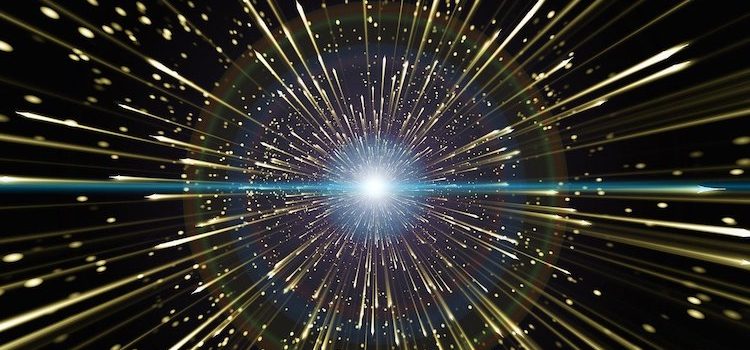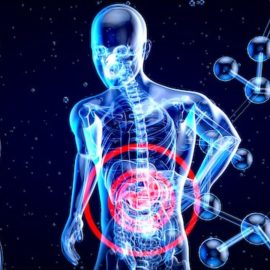

This article is an excerpt from the Shortform book guide to "A Brief History of Time" by Stephen Hawking. Shortform has the world's best summaries and analyses of books you should be reading.
Like this article? Sign up for a free trial here .
What is the inflationary big bang model? Does it solve the fine-tuning problem?
The big bang theory implies that the universe’s initial conditions had to be “just right” in order for human life to be possible. Physicist Stephen Hawking concedes that this requirement points to a problem with the theory. He discusses the inflationary big bang model as one way to address the problem.
Keep reading to learn about the inflationary big bang model.
The Fine-Tuning Problem
Hawking relates how, as scientists continued to refine the big bang theory, their models implied that the initial conditions of the universe (like its initial rate of expansion, density and uniformity, and so forth) would have to be exactly right for habitable planets to form. If any of the physical parameters of the big bang had been even slightly different, human life would never have been possible.
For example, if the initial expansion rate of the universe was too high, all the matter would have dispersed too quickly for stars and planets to form. If it was too low, gravity would have caused it to collapse again before life-supporting planets could form. Hawking points out that we observe the universe expanding at approximately the “critical rate,” that is, the maximum rate at which it could eventually re-collapse.
(Shortform note: We infer that this is important because it would give stars and planets the greatest window of opportunity to form, since any less would cause the universe to collapse in on itself sooner, and any more would remove the materials that are needed for star formation more quickly.)
To Hawking, the need for fine-tuning of the initial conditions indicates a problem with the theory, because the theory seems to predict that human life in our universe is extremely improbable, and yet we observe that human life exists. Hawking discusses the inflationary big bang model as one way to address the fine-tuning problem.
Is the Inflationary Big Bang the Solution?
Hawking explains that physicist Alan Guth proposed a variant of the big bang theory that would partially solve the fine-tuning problem. Guth suggested that there was a brief period of time immediately after the big-bang singularity during which out-of-balance nuclear forces acted like an anti-gravitational force, accelerating the expansion. This rapid expansion would have smoothed out any irregularities in the density of the early universe, and would also explain why the universe is expanding at just the right rate.
Guth’s idea was rooted in a principle of quantum mechanics that electromagnetic and nuclear forces become indistinguishable from each other at sufficiently high temperatures. Since the temperature of the universe would have been infinitely high at the singularity, these forces would initially have been unified. As the universe expanded and cooled off, these forces eventually separated.
However, Guth proposed that there was a slight delay between the time the temperature of the universe fell below the separation point and the time the forces actually separated, similar to how water often “supercools” before it freezes.
During this time when the forces were out of balance because the universe was “supercooled,” (cooled below the equilibrium transition temperature) they would have acted like an anti-gravitational force, accelerating the expansion of the universe. Then, when they did separate, this anti-gravitational effect would have been removed, and the expansion rate of the universe would have naturally settled down to approximately the critical rate. This would explain why the universe is expanding at just the right rate, resolving one aspect of the fine-tuning problem.
| Supercooling Guth’s argument for the inflationary big bang is rooted in the concept of supercooling, so some background on supercooling can help you understand his theory. “Supercooling” typically means cooling a liquid below its freezing point without causing it to solidify. This is possible because when a liquid freezes, it doesn’t all solidify at once. Instead, it starts to freeze at one or more “nucleation sites,” and ice crystals (in the case of water) grow outward from these sites. Sharp corners or particles of other solids make the best nucleation sites, particularly if the solid has a similar crystal structure to the freezing liquid. Thus, if the liquid is pure (has no solid particles of other materials in it) and is in a very smooth container, the lack of nucleation sites allows the liquid to be cooled well below its freezing point. Supercooling can lead to sudden freezing when a nucleation site eventually is provided. This is because freezing is an “exothermic process,” meaning that you remove heat from a liquid as you freeze it. You have to remove a certain amount of heat to freeze a given amount of water (or other liquid). It takes time to transfer heat out of the liquid, so usually the liquid freezes gradually at a constant temperature, namely its freezing point. But with supercooling, you can continue to remove heat from the liquid as its temperature drops below its freezing point. It’s like you’re storing negative heat in the liquid, so as soon as the first ice crystal forms, it grows rapidly throughout the liquid, and, if it was sufficiently supercooled, it all freezes at once. Maybe you’ve experienced this with freezing rain. Under certain weather conditions, raindrops can become supercooled in the air, such that they freeze almost instantly when they hit the ground, forming a layer of ice over everything. Again, this instant freezing is possible because of the “negative heat” stored in the supercooled water. Guth’s proposal relies on a similar principle, namely the “negative energy” (relative to an equilibrium state) that the universe would have stored up as it cooled beyond the point where the electromagnetic and nuclear forces separate from each other. This “negative energy” would have been stored up during the rapid, “inflationary” expansion of the universe. Furthermore, Hawking and Guth assert that negative energy density acts like anti-gravity. This means that, for a period of time, the more the universe expanded and supercooled, the more negative energy it stored up, and so the more its expansion accelerated. This caused “inflation,” or runaway expansion. Then, when the forces started to separate (like the first ice crystal forming) it would have caused the expansion rate of the universe to suddenly “freeze up,” in the sense that the acceleration stopped abruptly, leaving it expanding at a certain controlled rate. |

———End of Preview———
Like what you just read? Read the rest of the world's best book summary and analysis of Stephen Hawking's "A Brief History of Time" at Shortform .
Here's what you'll find in our full A Brief History of Time summary :
- The search for a theory that explains the history and evolution of our universe
- Stephen Hawking's discussions about time, space, dimensions, and quantum theory
- How time travel would theoretically work






